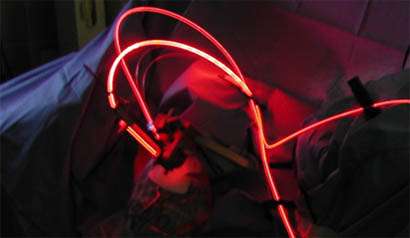Journal article details 'multiplicity of barriers' to clinical acceptance of medical laser innovations

The dynamic field of medical laser applications continually offers new systems and techniques enabling less invasive or more targeted treatments. But the path from the lab to the clinic can be slowed by "a multiplicity of barriers" requiring patience, persistence, and financial support, note authors of an article published today (16 June) in the Journal of Biomedical Optics.
In "Medical laser application - translation into the clinics", Ronald Sroka, Laser-Forschungslabor, Hospital of Munich University, and his co-authors detail the path to successful implementation with examples of promising technologies and their translation into acceptance in the medical community.
At technical conferences, unmet clinical needs and detailed requests from clinicians are discussed and innovative techniques are introduced, say the authors in detailing the path.
Subsequent research is informed by this interchange of ideas, and includes technicians and companies whose contributions are indispensable in developing prototypes and initiating clinical trials.
Only after clinical testing and comparison with established nonoptical clinical procedures can the positive or negative impact of new biophotonic technologies be assessed - another of the barriers that must be worked through before achieving full acceptance in the medical community.
Technology examples noted in the paper include:
- a non-invasive optical method implemented in a portable device that provides low-cost, rapid screening for iron deficiency, which is found in particular among infants, young children, adolescents, and menstruating and pregnant women. Adverse effects of iron deficiency include anemia, impaired cognitive development, decreased immune responsiveness, and, when severe, death. Iron supplements are widely used to prevent or correct nutritional iron deficiency, but have been shown to increase the risk of severe illness and death in children when malaria is present. The World Health Organization has concluded that iron supplements should not be given without screening for iron deficiency.
- novel photonics-based tools to fundamentally change the clinical management of breast cancer - the most common cancer among women worldwide in high-income as well as low- and middle-income countries. Improving the selection of women entering breast cancer screening programs and adjusting the screening frequency based on a personalized risk assessment would lead to a better utilization of available resources, enable detection of predominantly early-stage breast cancer, and reduce the overall cost to health care systems.
- in neurosurgery, fluorescence methods that permit identification during surgery of residual tumor tissue in treatment of glioblastoma multiforme, the most common form of primary brain cancer in adults. Survival after surgery and radiotherapy is linked to the completeness of tumor removal.
- a minimally invasive laser treatment to relieve nasal airway obstruction in people with long-term allergies or other conditions. Patients who do not respond to sprays or other pharmacological treatment may require surgery, which is often accompanied by long-term bleeding and further discomfort. Endonasal laser treatments cause limited side effects with little or no bleeding, and result in similar airway clearing.
- laser treatment of varicose veins, which appear among ~50% of adults in some areas of Europe with symptoms including sensations such as heavy legs, tension, swelling, pain while standing and sitting, discoloring, and phlebitis. In half of cases, patients require surgery. Procedures such minimally invasive endovenous laser therapy have provided relief to the patient with just one puncture.
The article appears in a special section titled "Light for Life" celebrating the International Year of Light and Light-based Technologies 2015 (IYL2015) and paralleling a dedicated session at the at the European Conference on Biomedical Optics (ECBO) running 21-25 June in Munich. Journal of Biomedical Optics publisher SPIE is a Founding Sponsor of the IYL2015 and a sponsor of ECBO.
Journal information: Journal of Biomedical Optics
Provided by SPIE

















